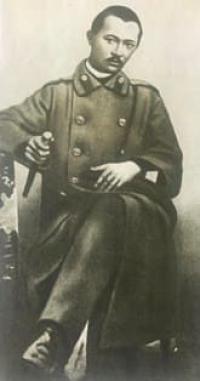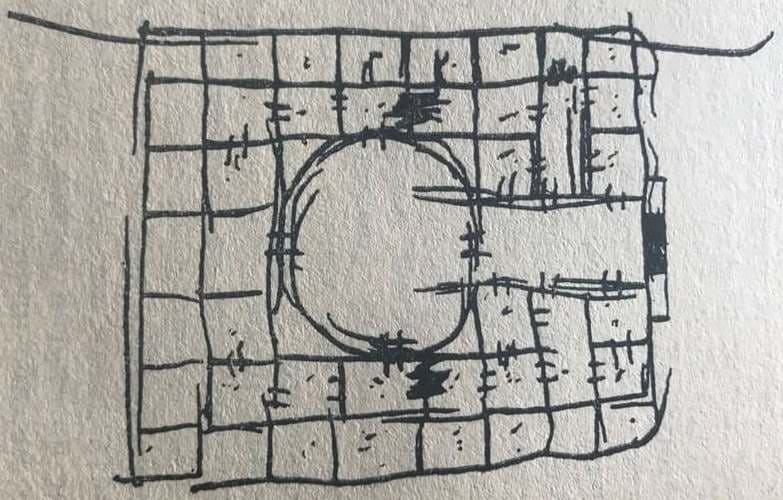Вы здесь
Valikhanov about Tash-Rabat 1859.

Journey through Naryn region and Tash-Rabat caravanserai.
“The area is covered with good grass and along the banks of the river it is a little swampy, the mountains are made of red clay, mixed with conglomerate lying on sedimentary formations. To the right, the top of the mountain from the destruction of feldspar particles forms groups of rocks that look like fantastic castles. The Kirghiz call it Tuemuynak.
The road is not rocky, and the foothills have a rounded shape, and therefore, although there are passes, they are of insignificant height and are convenient for crossing; We made this transition at an accelerated pace, fearing the persecution of tweets."
Chokan Valikhanov.
Walk from Chatyr-Kol lake to Tash-Rabat gorge.
Returning in the early spring of 1859 from Kashgar, Chokan Valikhanov visited the construction of Tash-Rabat and made a short description.
"March 18. (23 versts). Crossing, from 23 versts the road (goes) along the river, in the direction to the northwest, then to the northeast, at first the road goes along a narrow gorge and in many places along such steep slopes that it would be extremely difficult for us It is surprising, but due to the fact that the river bed was covered with ice, we went safely to the Tashrabat building (8 versts from the overnight stay), behind which the river valley expands, and near Atbash it goes out onto a flat and wide valley of this river, covered with fat feed.
In the East, Rabat is a building built on high roads to provide shelter for travelers. It is arranged for a charitable purpose, like schools, loaf-sheds, fountains, wells in the steppes and bridges. One of the Bukhara khans, Abdullakhan, was especially fond of building this kind of building, and therefore the construction of this rabat is attributed to him.
The building is made of clay shale slabs, it is about 12 sazhens long and about 4 sazhens wide. A long corridor leads to a hall (5 arshins long) with a spheroidal dome; small low doors are made on the sides of the corridor, which cannot be entered except by bending down strongly.
These doors lead to small square rooms, 2 yards long, which are considered 41. In addition to the large hall, which has a round base (5 yards in diameter), the rest of the rooms consist of small longitudinal, narrow, or square (room), which are equal to half the length of the longitudinal.
They say that separate (rooms) were made for storing goods, and longitudinal ones for cattle, and that the doors were made very small because the wild-stone Kirghiz in winter turn it into a cattle pen. This building was plastered inside and outside, and niches decorated with arabesques were made inside, the surrounding niches have been preserved to this day.
In terms of style, Tash-Rabat belongs to a better architectural era than now in Kashgar. Asians, prone to superstition, believe that everything that requires great work and art (is) something supernatural. This building has its own legend, for example, they say that if you count it once, there are forty rooms, and in another - 39, and so on.
The inscriptions with which the walls are dotted, in places where the plaster has been preserved, show all the respect for this building and its builder. Wild-stone Kirghiz consider this discount as an undoubted miracle and sacrifice rams, which is proved by the bloody threshold of the gate and the heads of wild rams and goats that are hung on the gate.
The valley of Atbash is considered the best nomad camp of wild-stone Kirghiz, and bread grows in this valley and on Arpa, they say, down the Atbash there are ruins of some big city. At this time, all the Chiriks wandered down the Atbash, therefore Asanbai-ilbegi did not let the Kyrgyz travelers who were with us, so that they would not let their relatives know.

Authority
Chokan Valikhanov. "Description of the way to Kashgar and back to the Alatav district." Collected works in 5 volumes. Volume 3. Pages 53 - 85. 1858 - 1859.
https://godliteratury.ru/articles/2021/05/27/rossiia-i-step-dostoevskij-i-valihanov
«Russia and the Steppe. Dostoevsky and Valikhanov». Gennady Litvintsev.







